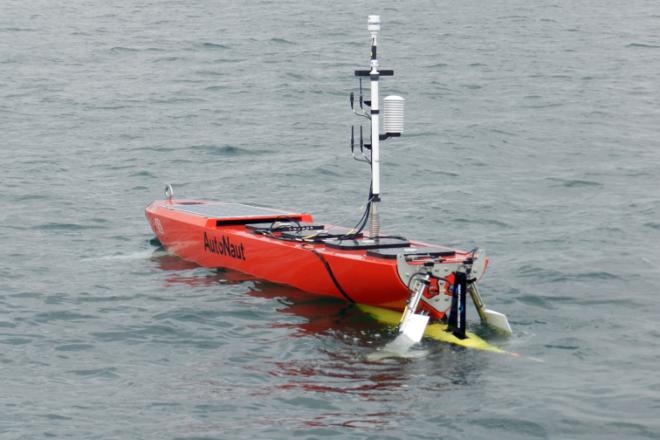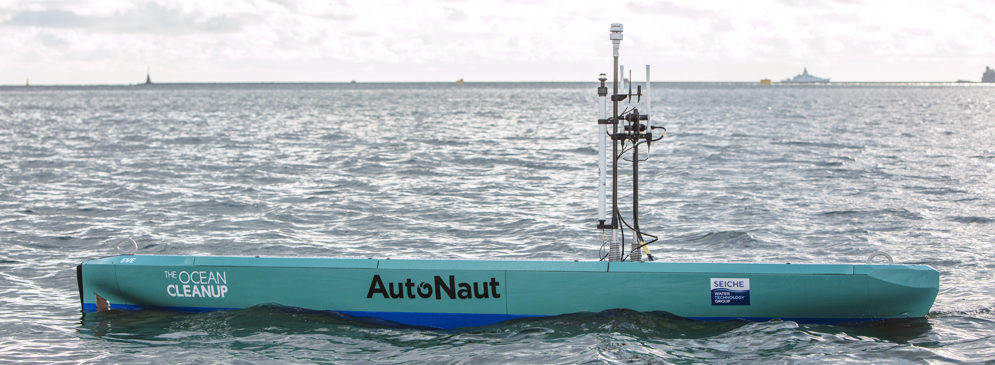This month our Caravela AutoNaut is part of a major international experiment to track the formation of clouds and their role in the climate system in the Atlantic Ocean, off the coast of Barbados. The researchers will use combined AutoNaut and glider measurements to understand how the ocean temperatures affect the layer of air above, and how the winds and sunshine affect the top tens of metres of the ocean.
One of our AutoNauts has been specially adapted in conjunction with the University of East Anglia (UEA) to carry and release an underwater Seaglider in remote and inaccessible ocean locations.
Seagliders are the same size as a small human diver, but can reach depths of 1,000 metres and travel the ocean by itself for months, covering thousands of kilometres. However they are difficult to launch inshore and usually have to be deployed from ships, which can make timing the release of the glider tricky. It can also take a long time, and a lot of battery life, to reach remote study sites. Other locations can be dangerous to access because of piracy or political tensions.
The AutoNaut, however, can be easily deployed from a beach or a ship and can wait in position until the Seaglider is ready to be released by remote pilots.
Pete Bromley, AutoNaut’s Managing Director, said: “It’s been a fantastic and rewarding challenge working with the world-class team at UEA. Deploying an ocean robot on an ocean robot is ground-breaking science.”


